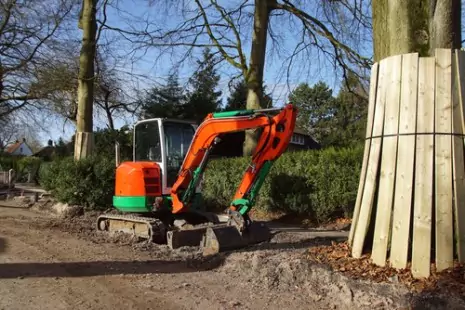When to call an arborist?

An arborist must be called if it is important to you that tree maintenance work be carried out professionally and with the safety of the surrounding people and plants in mind. Arborists are trained and qualified to perform a number of jobs, from planting and caring for ornamental and fruit trees to felling large trees and grinding stumps.
Felling of trees, including dangerous trees
In a densely populated place, people’s safety is the most important thing. Arborists can assess the condition of trees – whether they have diseases, fungi, rot or have been weakened by, for example, salt sprinkled on the street in urban conditions or constant vibration. When a tree is damaged, it can be prone to breaking and thus hazardous to both people and, for example, power lines. If the arborist assesses the condition of the tree as hazardous, he knows how to cut it down as safely as possible and with as little damage to the surroundings as possible, using the appropriate technique and felling method. Depending on the situation, a decision is made on the spot whether the tree will be lowered to the ground in one piece or by sections. Almost every tree branch can be accessed from the arborist with climbing equipment or a air lift.
Pruning trees and crowns
As arborists, we love trees and their aesthetic value. We know how to prune trees and make the crown of the tree more uniform and thus stronger. It is important to always prune off windbreaks, twin tops and branch stubs as they can become hazardous. Unfortunately, a tree that has been pruned incorrectly cannot be restored, and that is why we recommend that you always call in a specialist with the appropriate knowledge for pruning of trees.
Care and maintenance of trees (including fruit trees)
Trees, be they fruit trees or resident trees, need the human hand much more than trees growing in the forest. The earlier you start tree care, the more certain you can be that you will get healthy, beautiful, safe and strong trees. In the case of fruit trees, for example, you have to start already in the year after planting. Of course, the arborist also takes care of older trees. However, we want to emphasize that if a tree is properly cared for when it is young, its maintenance needs will be significantly less as an adult.
Planting, maintenance and pruning of hedges

When planting hedges, it is important to choose the right seedling as well as its regular maintenance. Since the reason for planting a hedge can be to protect the neighbor from the eyes and the wind, or for example to delimit the plot for decorative purposes, we can advise you on which plant to choose. Regardless of the purpose, it is important to trim it regularly, sometimes even several times a year, to achieve an even and dense hedge. Arborist is happy to help here!
Removing stumps

Unfortunately, when the tree has been felled, stump remain, which is very inconvenient to get rid of. The stumps of some tree species are decaying for decades, and the fastest way to get rid of the stumps left over from felling trees is grinding. Arborists use special equipment for this purpose, which can also access tight spaces where, for example, heavy machinery cannot fit. The stump grinder also does not destroy the surrounding greenery and grass as much as tractors, and the hole in the ground created by grinding can be filled on the spot with soil or organic material left over from grinding.
Assessment of trees
Arborists can assess the condition of trees. Its purpose is to give an assessment, for example, of the health status of a woody plant, its estimated lifespan or the use of necessary maintenance techniques. The assessment is carried out by arborists both by visual observation and by using various aids (e.g. a increment borer).
Protection of trees

Sometimes a tree with historical, milieu or species value grows in the immediate vicinity of a construction site or a road to be built. Arborists are competent to give advice already at the planning stage, which tree needs protection from external influences and to carry out actions to ensure the longest possible and dignified life of protected trees.
